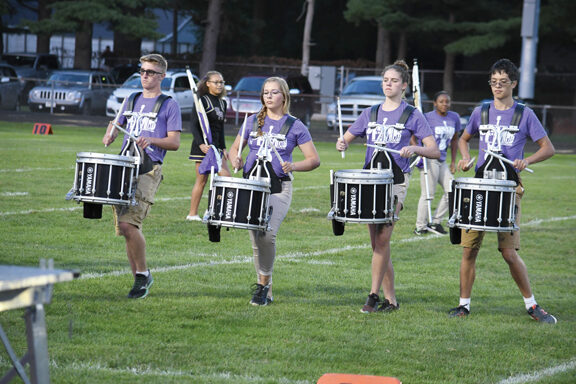Before making a trip to the music store to choose band instruments, it is important for musicians to be very realistic about their amount of free time and their personal response to a challenge. An honest assessment can make the difference between buying musical instruments that bring a lifetime of enjoyment or musical instruments that collect dust in the closet, believes many musicians.
Musical Instruments Offering Quick Results
There are several instruments that promise immediate gratification. Drums, for example are fun to play from day one. On the other hand, a truly accomplished percussionist can deliver complicated rhythms most drummers only dream about.
The uncommon bass ukulele, is another instrument that can take a week to learn and a lifetime to perfect. Woodwinds such as the harmonica, tin whistle, ocarina, or recorder can sound pleasant on the first blow, as opposed to the flute, clarinet, and saxophone which require a few days of dedicated huffing and puffing before even making a sound.
Each musician is bound to discover a range of difficulty when it comes to the core instruments comprising his favorite genre. For example, some musicians are able to keep up with a Celtic slow session on a month-old tin whistle or bodhran, but most hide practice sessions on the pipes or fiddle behind closed doors for quite a while. Similarly, a musician with a new ukulele or bass can chord along at a bluegrass jam in a relatively short time, but if he’s set on providing melody lines on the fiddle or banjo, he’s in for a challenge.
While promising results come more quickly on certain instruments, this doesn’t make these less of a long-term challenge. A musician may take an hour to play a song, then go on to bring life to that song through subtle nuances he discovers over months of practice.
Discerning parents will probably want to consider their children’s personalities in the choice of band instruments. When it comes to brass, for example, trumpets and cornets progress quickly compared to the French horn.
As woodwinds go, clarinets and saxophones may squeak for a beginner, but are bound to show speedier gains than their reeded cousin the oboe. While some kids are set on a challenging instrument and are determined enough to see the choice through. Others don’t have the patience for frustrating weeks of squawking. An experienced band director will have the insight to take a child’s preferences and personality into account when offering suggestions.
No Pain, No Gain With Some Musical Instruments
Some instruments are simply less painful on the ears during the learning process. Being able to produce a pleasant tone from the start can motivate less confident musicians to practice and to get out and play music with others.
Even the most dedicated musicians can grow discouraged during long months of squeaking, squealing, and scratching. Bowed instruments such as the violin, for example, are notorious for being difficult to master. The coordination required to run the bow along the strings takes dedication to develop. And in the mean time, practice is painful to the pride as well as the ears.
Additionally, a musical instrument may pose the hurdle of actual pain. The steel strings of ukulele, mandolins, and basses require at least a week of grueling practice sessions before calluses form protective barriers over sensitive fingertips. That tortuous week is the downfall of many a would-be ukulele player. The nylon strings of ukuleles or classical ukuleles are a viable option for musicians who’d rather not play through the pain.
Once a musician takes on an instrument, he’ll be putting in a lot of hours with it. Talking to someone who’s already mastered that particular instrument can offer a realistic idea of the challenge ahead. Musical instruments can be an enjoyable addition to anyone’s life. The key is finding just the right match when it comes to an instrument’s degree of difficulty and a musician’s commitment to the goal.
The degree of challenge is just one factor that goes into choosing a new musical instrument. A musician will also take into account each instrument’s versatility, cost, portability, and compatibility with his individual personality.
- How to support your child’s mental health: A parent’s guide - February 1, 2025
- Can data centers stay green? Balancing digital growth with clean energy - January 26, 2025
- Why Blockchain could be end of high fees, delays in global payments - January 17, 2025
- Abridge AI: Silent scribe transforming healthcare interactions - January 5, 2025
- What makes quantum AI a game-changer for technology - December 25, 2024
- How businesses must adapt to evolving cyber threats in 2025 - December 4, 2024
- How vaping stiffens blood vessels and strains lungs: Study - November 26, 2024
- OpenAI Codex or Google Codey? Finding the perfect AI for your code - November 18, 2024
- What Google’s Project Jarvis means for future of digital interaction - October 28, 2024
- 11 tips for creating engaging ad content - July 8, 2024




